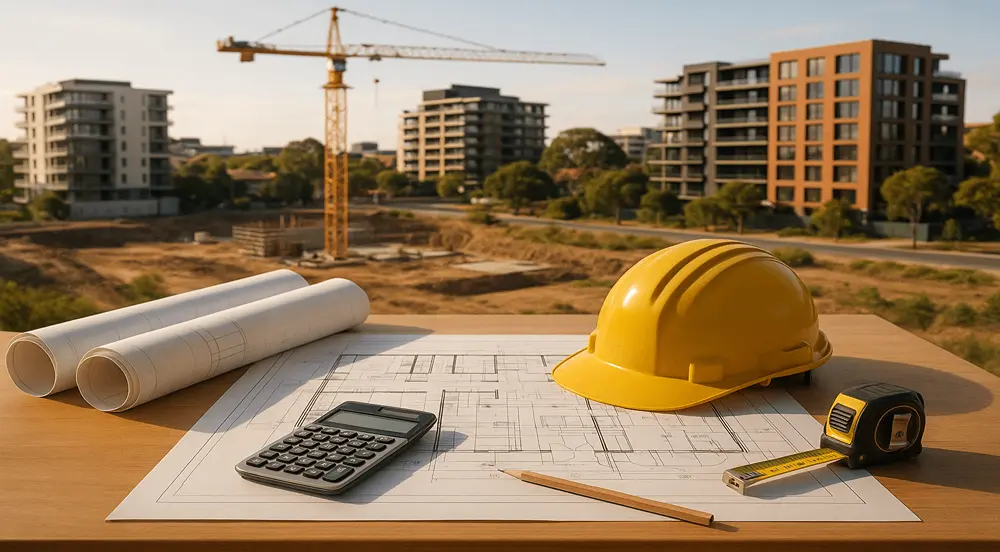Getting an estimate for construction right starts with breaking down materials, labour, and overheads to predict overall expenses. Key phases include scoping the work, performing quantity take-offs, and analysing costs for precision. Accurate estimates reduce overruns by up to 20%, according to industry reports from the American Institute of Architects, helping projects stay on track and within budget.
Understanding the Purpose of Construction Estimating
Solid cost forecasting builds client trust by aligning expectations with realistic pricing. It supports budget planning and contract pricing, minimising surprises during execution. Projects with clear budgetary estimates for construction cut procurement errors by 10-30%, as per procurement studies, ensuring smoother operations and better resource allocation without wasteful spending.Guide to Construction Estimating [Types, Tips, and Best Practices]
Core Steps to Create a Reliable Construction Estimate
Building a dependable estimate for construction demands a structured approach, drawing from blueprints, site details, and past data for accuracy. This method avoids guesswork, delivering forecasts that hold up under scrutiny. Below, we break down the process, from initial design review through to final profit adjustments.
Reviewing plans sets the foundation for everything that follows.
Reviewing project drawings and specifications
Analysing blueprints uncovers the full scope, from dimensions to technical specs, aligning with design intent and compliance needs. This step catches mismatches early, preventing costly revisions. Thorough checks can slash quantity take-off errors by up to 15%, based on construction best practices, keeping your estimate for construction grounded in reality.
Quantifying materials, labour, and equipment
Pinpointing exact needs through take-offs accounts for material wastage, labour productivity, and equipment efficiency. For instance, in a residential build, tallying bricks per square metre ensures precise ordering. When handling estimate jobs in construction, focus on these inputs:
- Materials; volume and type.
- Labour; hours and rates.
- Equipment; rental durations.
This keeps your estimate for construction balanced and realistic.
Applying unit rates and adjusting for regional costs
Leveraging databases like Rawlinsons Australian Construction Handbook applies standard rates, then tweaks them for local factors like Sydney’s higher labour costs. This benchmarking tailors the estimate for construction to Australian conditions, enhancing competitiveness without undercutting profits.
Including overheads, contingencies, and profit margins
Layering in contractor overheads, contingency allowances, and markup percentages safeguards against unforeseen issues. For a mid-sized project, contingencies might cover 5-10% for risks like weather delays. Typical overheads sit at 10-20% of total costs in Australia, per industry guides, ensuring the estimate for construction remains profitable yet fair.
Choosing the Right Estimating Method for Your Project
Matching estimation techniques to project maturity clarifies finances from the outset. Preliminary methods suit early ideas, while detailed ones fit mature designs. This progression boosts feasibility assessments, guiding decisions with increasing precision as details emerge.
Preliminary estimates for early planning
Early budgeting uses square-metre costs or historical benchmarks for quick feasibility checks. In concept design, this highlights potential hurdles, like site access inflating expenses. Such order-of-magnitude approaches refine planning accuracy, turning vague ideas into viable plans without overcommitting resources.
Detailed estimates for tendering and budgeting
Integrating quotes from suppliers and subs, alongside full take-offs, validates budgets for bids. A bill of quantities ensures competitiveness, as seen in commercial tenders where precision wins contracts. Crafting a budgetary estimate for construction here confirms alignment with client expectations, fostering trust through transparent figures.
Using Digital Tools and Estimating Software
Tools like CostX streamline workflows, automating calculations for faster, error-free results. They visualise data, aiding decisions in complex builds. As a construction estimate guide, software choices vary by project scale.
| Software | Key Features | Ideal Use Case |
|---|---|---|
| CostX | BIM integration, 3D take-offs | Large commercial projects |
| Buildxact | Cloud-based collaboration, mobile access | Small to medium builders |
| Cubit | Intuitive quantity take-offs, reporting | Residential and renovation jobs |
Key Factors That Influence Estimate Accuracy
Design maturity, market shifts, and data reliability shape how close your forecast lands. Experienced hands adjust for these, cutting deviations to 5-10%. Key influencers include:
- Design changes mid-process.
- Volatile supplier pricing.
- Variable labour productivity.
- Unpredictable site conditions.
Proactive updates in your estimate for construction mitigate these risks effectively.
Common Mistakes to Avoid in Construction Estimating
Overlooking site specifics or using stale rates often inflates errors, eroding trust. Skipping peer checks misses hidden gaps, like unaccounted contingencies. As an estimating guide for construction, always verify assumptions, real-world examples show rushed bids leading to 20% overruns, underscoring the need for diligence.10 Common Procurement Mistakes and How to Solve Them – Procurify
Validating and Reviewing Your Construction Estimate
Cross-verifying quantities against quotes and involving peers catches discrepancies early. In estimate jobs in construction, this builds reliability, like double-checking a bridge project’s steel volumes. Audit trails promote transparency, turning your estimate for construction into a defensible document that withstands scrutiny.
Building Trust Through Accurate Estimation
Precision in crafting an estimate for construction cements relationships with stakeholders in Australia’s competitive scene. It signals expertise, as seen in successful tenders where tight figures secure repeat business. Mastering this skill, per our construction estimate guide, elevates your firm’s reputation for delivering value without surprises.


